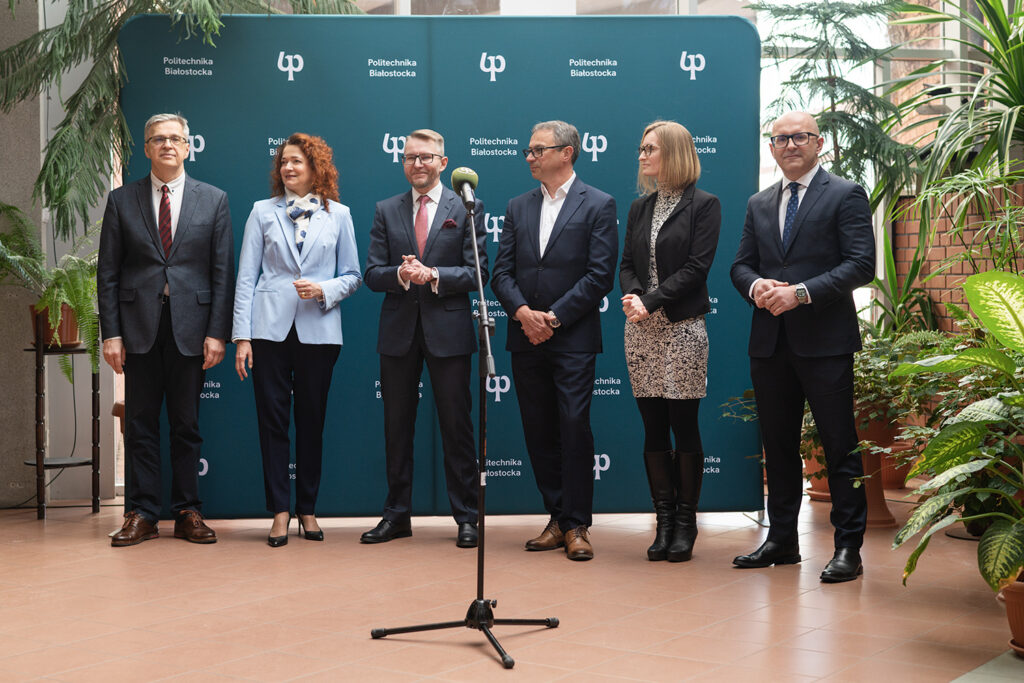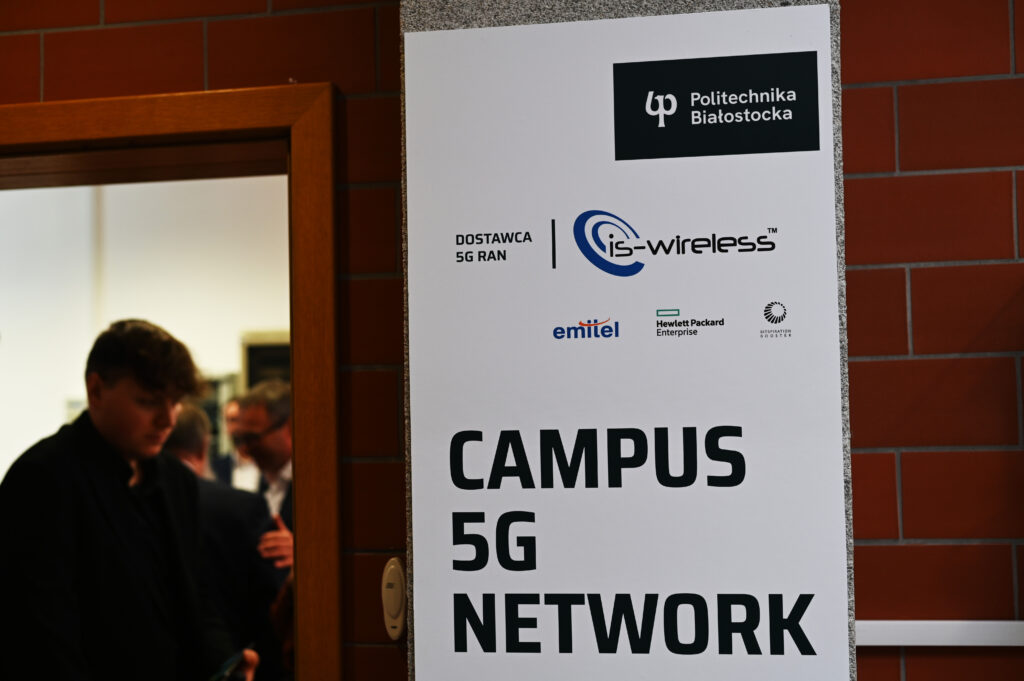IS-Wireless launches the first 5G Open RAN campus network at the Polish university

IS-Wireless has inaugurated the first 5G campus network at the Polish university, built in the Open RAN model and using the local frequencies. Experts emphasize that it is a milestone in the development of the telecommunications industry in Poland. The network, delivered at Bialystok University of Technology, will contribute to the education of the future 5G and 6G specialists. This is another groundbreaking implementation by IS Wireless, a regional 5G private networks leader.
Open RAN is the fastest-growing segment in the telecommunications area. Currently, it’s being implemented in 5G networks, but the industry leaders are convinced that it will be the preferred model in 6G networks
“That’s why the installation in Bialystok, the first of its kind at a Polish university, is so important,” explains Sławomir Pietrzyk, CEO and Founder of IS-Wireless. “Together with the University and partners involved in creating this network, we have delivered state-of-the-art solutions in a short time. Local frequencies have only been made accessible and we are already delivering a fully functional campus network.“
Pietrzyk adds that one of the main advantages of the Open RAN model is the use of solutions from multiple suppliers, as evident at Bialystok University of Technology. “The interfaces of the network components are open and specified, allowing the use of hardware and software from different companies. That is the essence of Open RAN,” he explains. He mentions that components provided by Emitel S.A. and Hewlett Packard Enterprise (HPE) were utilized during the network construction. Emitel S.A. provided the distributed antenna system (DAS) and HPE took care of the compute infrastructure.
“Due to the growing role of efficient and fast communication between devices in the modern world, 5G networks operating at high frequencies require skillful design and implementation, as well as a reliable radio signal distribution system. The quality of services provided in office or industrial buildings depends on this,” emphasizes Piotr Guziewicz, Director of the Network Planning and Service Development Office at Emitel.
“Cutting-edge telecommunications solutions are one of the driving forces of the economy, enabling smart factories and cities, as well as automation and the introduction of new services that require rapid data transfer. As a provider of end-to-end solutions from the edge to the cloud, including a full portfolio of services for wired and wireless connectivity, we are pleased to see Polish science and business collaborating in this field,” notes Krzysztof Kowalczyk, Sales Director at Hewlett Packard Enterprise Poland.
It isn’t the first such implementation by IS-Wireless – a few months ago, the company launched a similar network at Riga Technical University (RTU), Latvia. Additionally, the company was responsible for implementing Poland’s first industrial network in the Open RAN established at the Hub4Industry in Krakow.
Training network’s impact on Industry 4.0

The 5G network built at the Bialystok University of Technology will help students gain the knowledge necessary for building and maintaining mobile networks in an open model. In the coming years, the majority of telecommunications networks worldwide will be built using this approach. Therefore, Bialystok University of Technology aims to educate future professionals who can contribute to the dynamic development of this sector in the region.
“Students will have access to the latest technology,” emphasizes Professor Mirosław Świercz, Vice-Rector for Development at Bialystok University of Technology. “They will be able to test commercial devices and perform tests related to 5G radio transmission – for example, check what server computing resources this network uses,” says the scientist.
Andrzej Zankiewicz, PhD from the Department of Photonics, Electronics, and Lightning Technology at the Faculty of Electrical Engineering at Bialystok University of Technology adds that in the newly established laboratory students will practically examine the impact of signal modulation and coding of the signal on communication. “They will be able to change parameters and observe how they affect the data transmission rate, transmission reliability and its resistance to interference from the surrounding environment,” he concludes.